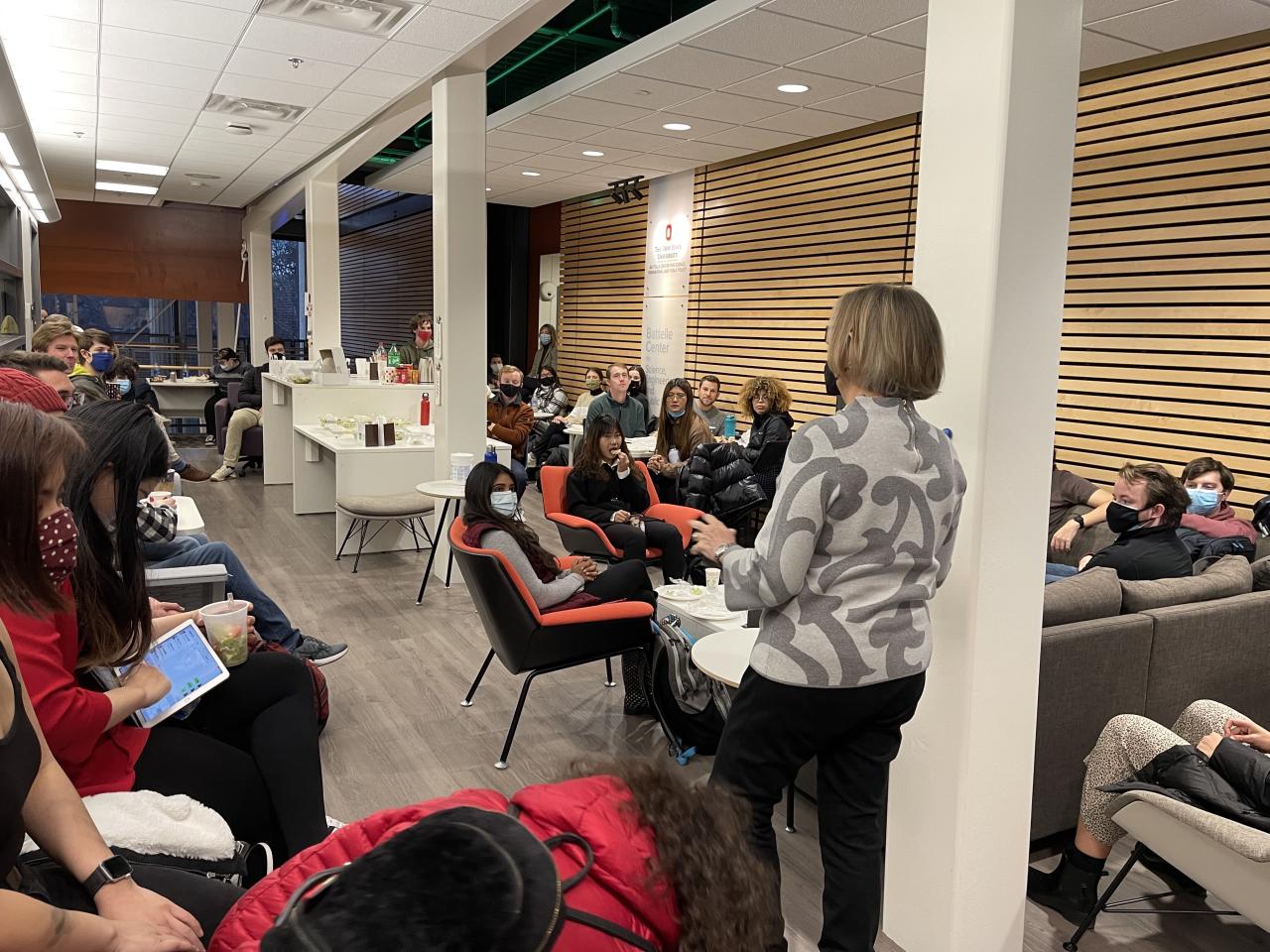To close out fall semester at Ohio State Battelle Center for Science, Engineering and Public Policy, students got the opportunity to hear from and meet Kathy Sullivan.
Sullivan is a geologist, former NASA astronaut and oceanographer with a diverse background in STEM and policy. She was the first American woman to walk in space as well as the first woman to dive to the Challenger Deep (the deepest part of Earth’s oceans). She has also served as the as the administrator for the National Oceanic and Atmospheric Administration (NOAA) and currently serves on the President’s Council of Advisors on Science and Technology (PCAST).
Sullivan was the first executive director of Battelle Center, and having her return to see how her work has been continued was certainly a highlight of the semester.
